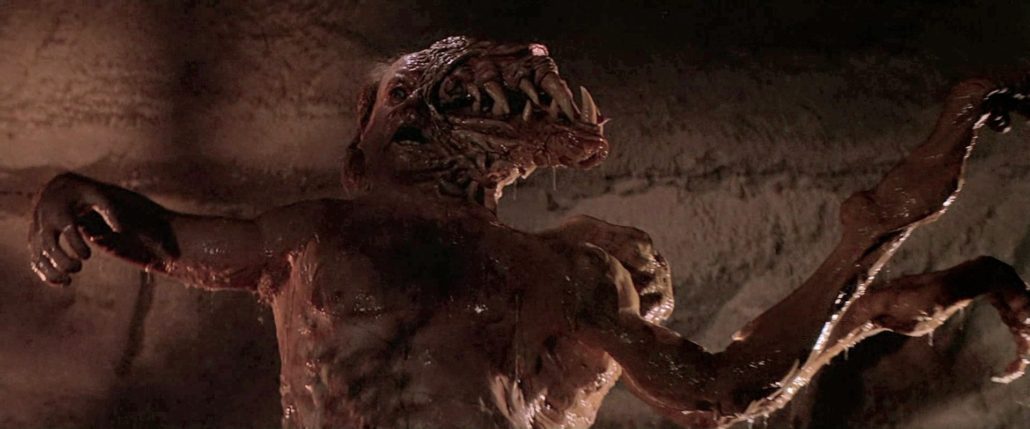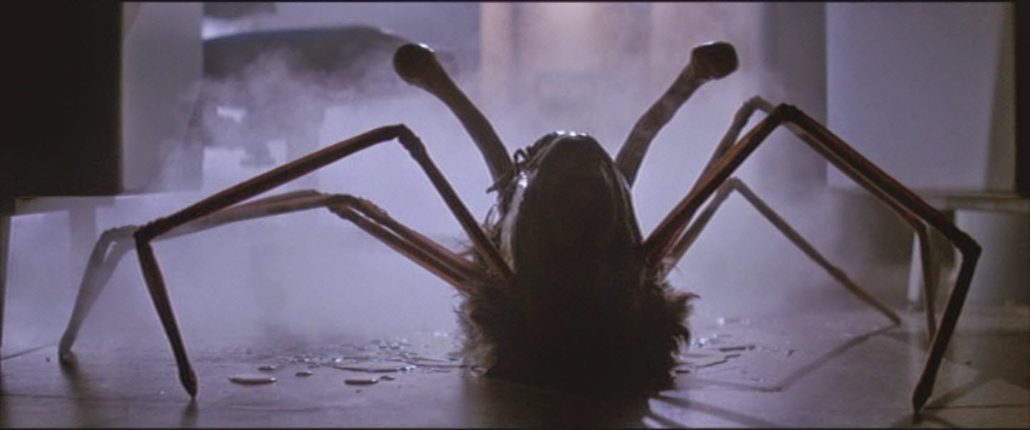Best Practical Effects in Horror Movies

CGI was not always what it is today. Through the years, its progression and advancements has been fast-moving, making a film that included CGI look dated a handful of years later. To lengthen the life of their films, many directors opted for practical effects vs CGI, leaning on the inventiveness and creativity of their team to use animatronics, dummies, costumes, makeup and even condiments to mimic horror. Practical effects also resulted in more believable acting, allowing actors to act and react in real-time as the scene unfolded. Two films infamous for their practical effects were John Carpenter’s The Thing and Ridley Scott’s Alien, and both are still believable to watch to this very day.
Ridley Scott’s Alien (1979)
Anyone can watch Ridley Scott’s sci-fi horror film Alien today and not realize that it came out in 1979—more than 40 years ago. The practical effects are creative and inventive, making it a film that’s still believable to watch, which only heightens the horror.
The practical effects start off subtle, with the movement within the alien egg, and it’s one of the simplest and most realistic effects in the film. The alien embryo’s behavior is incredibly lifelike, with a realistic twitch resembling a real, living organism. That movement was actually Ridley Scott’s hands in latex gloves, moving within the shadowy plexiglass egg. The top of the egg utilized hydraulics and the innards were dressed with cow’s stomach and tripe, completing the realistic and believable alien egg.
One of the most startling moments of the film is when the facehugger form of the alien jumps out of the egg and onto the helmet of Kane (John Hurt). The creature was shot out of the egg with high-pressure air hoses, but to heighten effect and detail, the footage was slowed. We thankfully get a better look at the facehugger in the dissection scene, where Scott dressed the inside of the creature with oysters, clams and muscles, giving the alien such a fleshy and real look. The legs were cleverly made from sheep’s intestines, completing a perfectly believable and terrifying monster.
The Famous Chestburster Scene
Of course, there is the famous dinner scene (also known as the “chestburster scene”). This was achieved by having John Hurt’s head and arms on top of the table along with a dummy chest and legs, while his body was below. The false chest was stuffed with organs from the butcher’s shop and a couple of hoses to pump stage blood. Two technicians were under the table, ready to pump the stage blood and shove the alien puppet through the torso. The script only read “the thing emerges” and the cast had no idea it would be so gruesome. The cast entered the prepared set and the camera crew were reportedly all wearing raincoats and plastic shields, with the stench of formaldehyde lingering. Nobody said a word, but Sigourney Weaver reportedly looked scared and said “I have a feeling I’m going to be pretty repulsed right now.” With four cameras rolling, the scene commenced, surprising and terrifying the cast. Their genuine reactions elevate the believability and horror of that famous scene.
And finally, there is the alien itself. The believability of the creature is heavily due to the actor that wore the suit, Bolaji Badejo who stood 7ft 2in. The creature’s body was sculpted using plasticine, taking moldings of snake vertebra and cooling tubes from a Rolls Royce. The alien’s head was made by Carlo Rambaldi, who engineered the animatronics of the jaw and inner mouth, consisting of a system of hinges and cables with over 900 moving parts and points of articulation. The suit was hot and heavy, but Badejo was up to the challenge and gave us a chillingly terrifying alien on screen.
John Carpenter’s The Thing (1982)

Scenes from The Thing still linger in the minds of viewers from decades ago, pointing to the grotesque success of the practical creation of the Thing. Special effects creator Rob Bottin poured himself into the ever-evolving and morphing monster, to the point of sacrificing his own health. The 23-year-old creator committed himself completely, working every single day for 56 weeks- every day for over a year. During that time he lived on the Universal lot, sleeping at one of the sets or locker rooms. Once the film reached completion, he checked himself into the hospital for exhaustion, double pneumonia and a bleeding ulcer. The result of his dedication and efforts live on through the success of The Thing.
The Famous Chest Chomp Scene
The real challenge with The Thing’s monster is that it continuously morphed and contorted, evolving from one form to another. Carpenter had originally conceived the Thing as a single creature, but Bottin suggested the creature constantly change and be able to take on multiple forms. He committed to create not only one monster, but several, and it was his ingenious use of mayo, creamed corn, strawberry jam, melted chemicals, microwaved bubble-gum and KY jelly that dressed his creations that brought the Thing to life.
In the “chest chomp” scene, Norris (Charles Hallahan) is unconscious while Dr. Copper (Richard Dysart) attempts to revive him with a defibrillator. Norris’ chest then caves in and the Thing emerges, biting off Dr. Cooper’s arms. Bottin executed this scene by creating a prosthetic chest of Hallahan with animatronic jaws within. He took the time to copy the chest hair pattern of Hallahan and carry it over onto the dummy chest, only adding to the realism. He then recruited a double amputee to stand in for Dr. Cooper, fitting him with prosthetic arms filled with wax bones, rubber veins and Jell-O. The animatronic jaws in the chest of Norris bit down on the prosthetic arms as the actor pulled away, giving the illusion of arms being bitten off by the monster in the cavity of Norris.
It’s just after the Dr.’s arms are ripped off that one of the most famous forms of the monster comes into form- the spider-Thing. Bottin and Hallahan spent 10 days together creating a complete life-like mold of the actor, complete with hydraulic jaws. Legs were created and pulled through the head, then played in reverse, creating the illusion of legs growing from the spider-Thing. The head was then piloted around the set on a remote-control vehicle, with a separate set of animatronic legs moving about, creating the illusion of the spider-Thing scurrying away from the camera. This creepy and make-you-shift-in-your-seat shot was only on screen for a moment, while requiring months of planning and work.
When to use practical effects in movies
Alien and The Thing are two iconic examples of practical effects that worked in each film extremely well. Practical effects requires a little thinking outside of the box as a filmmaker, which is exactly what Carpenter and Scott did.
Want to know when you should use practical effects vs CGI and vice versa? Click the hyperlink to find out.
